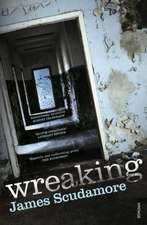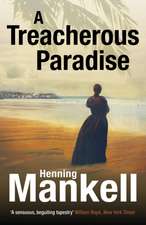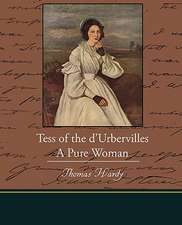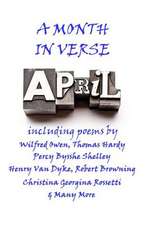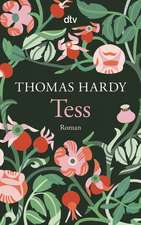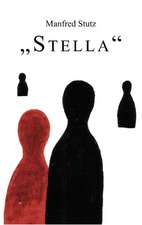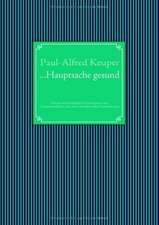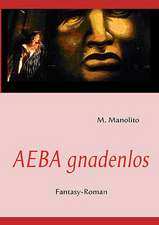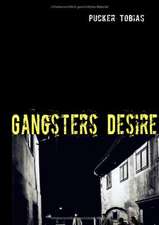The Return of the Native
Autor Thomas Hardyen Limba Engleză Paperback – 31 ian 1982 – vârsta de la 14 până la 19 ani
Injured by forces beyond their control, Hardy’s characters struggle vainly in the net of destiny. In the end, only the face of the lonely heath remains untouched by fate in this masterpiece of tragic passion, a tale that perfectly epitomizes the author’s own unique and melancholy genius.
| Toate formatele și edițiile | Preț | Express |
|---|---|---|
| Paperback (31) | 39.38 lei 3-5 săpt. | |
| Bantam Classics – 31 ian 1982 | 39.38 lei 3-5 săpt. | |
| Vintage Publishing – 3 iun 2010 | 46.26 lei 23-34 zile | +21.54 lei 7-13 zile |
| Penguin Books – 23 iun 1999 | 50.73 lei 23-34 zile | +22.02 lei 7-13 zile |
| Oxford University Press – 14 aug 2008 | 50.73 lei 10-16 zile | +22.02 lei 7-13 zile |
| CREATESPACE – | 64.23 lei 3-5 săpt. | |
| CREATESPACE – | 79.17 lei 3-5 săpt. | |
| CREATESPACE – | 90.39 lei 3-5 săpt. | |
| CREATESPACE – | 92.33 lei 3-5 săpt. | |
| – | 97.26 lei 3-5 săpt. | |
| – | 124.64 lei 3-5 săpt. | |
| CreateSpace Independent Publishing Platform – | 125.11 lei 3-5 săpt. | |
| CREATESPACE – | 135.15 lei 3-5 săpt. | |
| – | 142.35 lei 3-5 săpt. | |
| CREATESPACE – | 142.70 lei 3-5 săpt. | |
| CHIZINE PUBN – 25 mai 2017 | 214.31 lei 17-23 zile | +19.89 lei 7-13 zile |
| CreateSpace Independent Publishing Platform – | 84.88 lei 6-8 săpt. | |
| KUPERARD (BRAVO LTD) – 22 mar 2001 | 90.35 lei 6-8 săpt. | |
| Digireads.com – 8 iun 2018 | 100.78 lei 6-8 săpt. | |
| – | 119.39 lei 6-8 săpt. | |
| SMK Books – 5 ian 2012 | 127.01 lei 6-8 săpt. | |
| Crescent Moon Publishing – 18 mai 2020 | 131.65 lei 6-8 săpt. | |
| SC Active Business Development SRL – 29 noi 2017 | 145.15 lei 38-44 zile | |
| Aegypan Press – 31 dec 2006 | 145.38 lei 6-8 săpt. | |
| TREDITION CLASSICS – 30 noi 2011 | 154.90 lei 38-44 zile | |
| CreateSpace Independent Publishing Platform – 3 dec 2015 | 200.95 lei 6-8 săpt. | |
| Simon & Brown – 30 oct 2018 | 203.68 lei 38-44 zile | |
| Simon & Brown – 15 noi 2018 | 218.26 lei 38-44 zile | |
| Maven Books – iul 2023 | 221.09 lei 6-8 săpt. | |
| Echo Library – 30 iun 2003 | 230.76 lei 38-44 zile | |
| Echo Library – 31 mar 2006 | 262.61 lei 38-44 zile | |
| TREDITION CLASSICS – 31 oct 2011 | 263.95 lei 6-8 săpt. | |
| Hardback (5) | 85.00 lei 23-34 zile | +37.40 lei 7-13 zile |
| EVERYMAN – 8 oct 1992 | 85.00 lei 23-34 zile | +37.40 lei 7-13 zile |
| Cambridge University Press – 24 feb 2021 | 808.62 lei 3-5 săpt. | |
| SMK Books – 3 apr 2018 | 241.00 lei 6-8 săpt. | |
| Simon & Brown – 30 oct 2018 | 256.82 lei 38-44 zile | |
| Simon & Brown – 15 noi 2018 | 273.15 lei 38-44 zile |
Preț: 39.38 lei
Nou
Puncte Express: 59
Preț estimativ în valută:
7.54€ • 8.21$ • 6.35£
7.54€ • 8.21$ • 6.35£
Carte disponibilă
Livrare economică 02-16 aprilie
Preluare comenzi: 021 569.72.76
Specificații
ISBN-13: 9780553212693
ISBN-10: 0553212699
Pagini: 512
Dimensiuni: 127 x 158 x 21 mm
Greutate: 0.24 kg
Editura: Bantam Classics
ISBN-10: 0553212699
Pagini: 512
Dimensiuni: 127 x 158 x 21 mm
Greutate: 0.24 kg
Editura: Bantam Classics
Notă biografică
Thomas Hardy, whose writing immortalized the Wessex countryside and dramatized his sense of the inevitable tragedy of life, was born at Upper Bockhampton, near Stinsford in Dorset in 1840, the eldest child of a prosperous stonemason. As a youth he trained as an architect and in 1862 obtained a post in London. During his time he began seriously to write poetry, which remained his first literary love and his last. In 1867-68, his first novel was refused publication, but Under the Greenwood Tree (1872), his first Wessex novel, did well enough to convince him to continue writing. In 1874, Far from the Maddening Crowd, published serially and anonymously in the Cornhill Magazine, became a great success. Hardy married Emma Gifford in 1878, and in 1885 they settled at Max Gate in Dorchester, where he lived the rest of his life. There he had wrote The Return of the Native (1878), The Mayor of Casterbridge (1886), Tess of the d’Urbervilles (1891), and Jude the Obscure (1895).
With Tess, Hardy clashed with the expectations of his audience; a storm of abuse broke over the “infidelity” and “obscenity” of this great novel he had subtitled “A Pure Woman Faithfully Presented.” Jude the Obscure aroused even greater indignation and was denounced as pornography. Hardy’s disgust at the reaction to Jude led him to announce in 1869 that he would never write fiction ever again. He published Wessex Poems in 1898, Poems of the Past and Present in 1901, and from 1903 to 1908, The Dynast, a huge drama in which Hardy’s conception of the Immanent Will, implicit in the tragic novels, is most clearly stated.
In 1912 Hardy’s wife, Emma died. The marriage was childless and had been a troubled one, but in the years after her death, Hardy memorialized her in several poems. At seventy-four he married his longtime secretary, Florence Dugdale, herself a writer of children’s books and articles, with whom he live happily until his death in 1928. His heart was buried in the Wessex Countryside; his ashes were placed next to Charles Dickens’s in the Poet’s Corner of Westminster Abbey.
With Tess, Hardy clashed with the expectations of his audience; a storm of abuse broke over the “infidelity” and “obscenity” of this great novel he had subtitled “A Pure Woman Faithfully Presented.” Jude the Obscure aroused even greater indignation and was denounced as pornography. Hardy’s disgust at the reaction to Jude led him to announce in 1869 that he would never write fiction ever again. He published Wessex Poems in 1898, Poems of the Past and Present in 1901, and from 1903 to 1908, The Dynast, a huge drama in which Hardy’s conception of the Immanent Will, implicit in the tragic novels, is most clearly stated.
In 1912 Hardy’s wife, Emma died. The marriage was childless and had been a troubled one, but in the years after her death, Hardy memorialized her in several poems. At seventy-four he married his longtime secretary, Florence Dugdale, herself a writer of children’s books and articles, with whom he live happily until his death in 1928. His heart was buried in the Wessex Countryside; his ashes were placed next to Charles Dickens’s in the Poet’s Corner of Westminster Abbey.
Extras
A SATURDAY afternoon in November was approaching the time of twilight, and the vast tract of unenclosed wild known as Egdon Heath embrowned itself moment by moment. Overhead the hollow stretch of whitish cloud shutting out the sky was as a tent which had the whole heath for its floor.
The heaven being spread with this pallid screen and the earth with the darkest vegetation, their meeting-line at the horizon was clearly marked. In such contrast the heath wore the appearance of an instalment of night which had taken up its place before its astronomical hour was come: darkness had to a great extent arrived hereon, while day stood distinct in the sky. Looking upwards, a furze-cutter would have been inclined to continue work; looking down, he would have decided to finish his faggot and go home. The distant rims of the world and of the firmament seemed to be a division in time no less than a division in matter. The face of the heath by its mere complexion added half an hour to evening; it could in like manner retard the dawn, sadden noon, anticipate the frowning of storms scarcely generated, and intensify the opacity of a moonless midnight to a cause of shaking dread.
In fact, precisely at this transitional point of its nightly roll into darkness the great and particular glory of the Egdon waste began, and nobody could be said to understand the heath who had not been there at such a time. It could best be felt when it could not clearly be seen, its complete effect and explanation lying in this and the succeeding hours before the next dawn: then, and only then, did it tell its true tale. The spot was, indeed, a near relation of night, and when night showed itself an apparent tendency to gravitate together could be perceived in its shades and the scene. The sombre stretch of rounds and hollows seemed to rise and meet the evening gloom in pure sympathy, the heath exhaling darkness as rapidly as the heavens precipitated it. And so the obscurity in the air and the obscurity in the land closed together in a black fraternization towards which each advanced half-way.
The place became full of a watchful intentness now; for when other things sank brooding to sleep the heath appeared slowly to awake and listen. Every night its Titanic form seemed to await something; but it had waited thus, unmoved, during so many centuries, through the crises of so many things, that it could only be imagined to await one last crisis—the final overthrow.
The heaven being spread with this pallid screen and the earth with the darkest vegetation, their meeting-line at the horizon was clearly marked. In such contrast the heath wore the appearance of an instalment of night which had taken up its place before its astronomical hour was come: darkness had to a great extent arrived hereon, while day stood distinct in the sky. Looking upwards, a furze-cutter would have been inclined to continue work; looking down, he would have decided to finish his faggot and go home. The distant rims of the world and of the firmament seemed to be a division in time no less than a division in matter. The face of the heath by its mere complexion added half an hour to evening; it could in like manner retard the dawn, sadden noon, anticipate the frowning of storms scarcely generated, and intensify the opacity of a moonless midnight to a cause of shaking dread.
In fact, precisely at this transitional point of its nightly roll into darkness the great and particular glory of the Egdon waste began, and nobody could be said to understand the heath who had not been there at such a time. It could best be felt when it could not clearly be seen, its complete effect and explanation lying in this and the succeeding hours before the next dawn: then, and only then, did it tell its true tale. The spot was, indeed, a near relation of night, and when night showed itself an apparent tendency to gravitate together could be perceived in its shades and the scene. The sombre stretch of rounds and hollows seemed to rise and meet the evening gloom in pure sympathy, the heath exhaling darkness as rapidly as the heavens precipitated it. And so the obscurity in the air and the obscurity in the land closed together in a black fraternization towards which each advanced half-way.
The place became full of a watchful intentness now; for when other things sank brooding to sleep the heath appeared slowly to awake and listen. Every night its Titanic form seemed to await something; but it had waited thus, unmoved, during so many centuries, through the crises of so many things, that it could only be imagined to await one last crisis—the final overthrow.
Recenzii
"This is the quality Hardy shares with the great writers...this setting behind the small action the terrific action of unfathomed nature."—D. H. Lawrence
Descriere
Descriere de la o altă ediție sau format:
'To be loved to madness - such was her great desire'Eustacia Vye criss-crosses the wild Egdon Heath, eager to experience life to the full in her quest for 'music, poetry, passion, war'. She marries Clym Yeobright, native of the heath, but his idealism frustrates her romantic ambitions and her discontent draws others into a tangled web of deceit and unhappiness.Early readers responded to Hardy's 'insatiably observant' descriptions of the heath, a setting that for D. H. Lawrence provided the 'real stuff of tragedy'. For modern readers, the tension between the mythic setting of the heath and the modernity of the characters challenges our freedom to shape the world as we wish; like Eustacia, we may not always be able to live our dreams.This edition has a critically established text based on the manuscript and first edition. ABOUT THE SERIES: For over 100 years Oxford World's Classics has made available the widest range of literature from around the globe. Each affordable volume reflects Oxford's commitment to scholarship, providing the most accurate text plus a wealth of other valuable features, including expert introductions by leading authorities, helpful notes to clarify the text, up-to-date bibliographies for further study, and much more.
'To be loved to madness - such was her great desire'Eustacia Vye criss-crosses the wild Egdon Heath, eager to experience life to the full in her quest for 'music, poetry, passion, war'. She marries Clym Yeobright, native of the heath, but his idealism frustrates her romantic ambitions and her discontent draws others into a tangled web of deceit and unhappiness.Early readers responded to Hardy's 'insatiably observant' descriptions of the heath, a setting that for D. H. Lawrence provided the 'real stuff of tragedy'. For modern readers, the tension between the mythic setting of the heath and the modernity of the characters challenges our freedom to shape the world as we wish; like Eustacia, we may not always be able to live our dreams.This edition has a critically established text based on the manuscript and first edition. ABOUT THE SERIES: For over 100 years Oxford World's Classics has made available the widest range of literature from around the globe. Each affordable volume reflects Oxford's commitment to scholarship, providing the most accurate text plus a wealth of other valuable features, including expert introductions by leading authorities, helpful notes to clarify the text, up-to-date bibliographies for further study, and much more.
Cuprins
List of Illustrations; General Editor's Preface; Acknowledgements; Chronology; Abbreviations of Texts of The Return of the Native; Introduction; The Return of the Native; Apparatus; Variations in Punctuation and Styling; End-of-Line Word Division; Editorial Emendations; Appendices: Appendix 1. Hardy's Preface to the Novel; Appendix 2. Description of the Manuscript; Appendix 3. Description of Substantive Editions; Appendix 4. Dialect Glossary and Table of Changes to Standard and Non-standard Speech; Appendix 5. A Note on Hardy's Note to VI.iii; Appendix 6. Egdon Heath and the Dorset Heathlands; Appendix 7. Illustrations to the Belgravia Serial Edition; Notes; Works Cited in the Notes; Textual Notes; Explanatory Notes.





